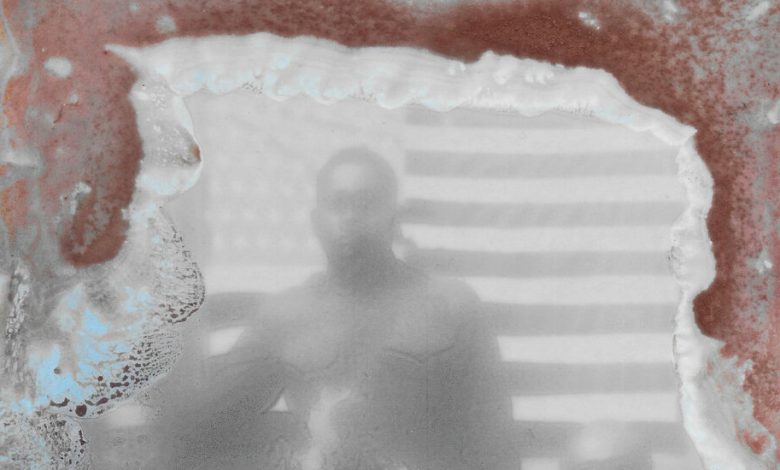The Hidden Ghosts of America’s Slave Past

I had come to Charleston, S.C., in search of ghosts. So I signed up for one of the many “haunted Charleston” nighttime walking tours of the “Holy City.” A few hours later, I wandered through the historic French Quarter, flanked by other tourists searching for a thrill. Gas lights flickered over decaying structures, cobblestone alleys, and houses that were at least a century old.
I’ve found that ghost tours can be a creepy, fun way to spend an evening, but also to get to know a city. They tend to focus on the notorious underside of a place: its gruesome criminals and tragic socialites; the terrible scenes of violence that might otherwise be forgotten. Ghost tours like the one I went on in Charleston offer a kind of history that might not be found in a museum; they can also tell you how a city sees itself.
Having taken ghost tours in a number of Southern cities — New Orleans, Richmond, Va., and Savannah, Ga., among them — I’ve come to notice a curious sameness to many of them.
What many of the major tour operators in the South seem to implicitly agree on is that race will go unmentioned. That cool May night was no exception: For all the attention paid to the city’s past, there was no talk of the injustice of slavery, which was especially brutal in Charleston, home to the largest slave auction in America’s history. And yet, there was no mention of it — and certainly no mention of the attempted slave revolt that changed the city forever.
***
The nighttime walking tour had promised death and depravity in the Holy City, and, in its own way, it delivered. As we walked through the downtown, the tour guide told us stories of the Barbadian pirate Stede Bonnet, who supposedly haunts the Old Exchange Building and Provost Dungeon; of Harriet Mackie, the tragic 17-year-old who, perhaps poisoned by her sewing woman, died shortly before her marriage; and of Sue Howard, the mother in eternal mourning whose ghost haunts the cemetery of St. Philip’s Church. (The church discourages these stories; a plaque on the grounds reads: “The only ghost at St. Philip’s is the Holy Ghost.”)
Leaving race out of any history is a striking blind spot — even in a ghost tour. Ghost stories, after all, are one of the ways we talk about historic injustices and crimes unavenged. Focusing on pirates and poisoned Southern belles, while ignoring the cruelty and horror of chattel slavery, is one of many ways the past gets whitewashed. The ghosts of slavery are still here, though sometimes they don’t lurk in creepy old buildings. Sometimes they are right in front of your face.
The one ghost in particular I was looking for in Charleston was Denmark Vesey. Born into slavery, Vesey had purchased his freedom in 1799 after winning a lottery, and became a prosperous carpenter. He was a prominent member of the community, and even helped found the African Methodist Episcopal Church (now known as “Mother Emanuel”). But in June 1822, he was arrested and charged with masterminding an insurrection. Vesey and his confederates were accused of planning to murder a sizable number of white Charlestonians, set the city ablaze, and flee to Haiti on waiting ships. While historians once debated whether the existence of the conspiracy to rebel was made up by the whites in power, a panic ginned up as an excuse to pass more draconian restrictions, most now seem to agree that it was probably real.
Vesey and 66 other men were convicted; he and 34 others were hanged.
***
The legacy of Vesey is complicated. As the likely organizer of a plot to murder on a wide scale, he’s long been viewed as a terrorist, his memory suppressed. Even the trial record was considered so incendiary (lest it fall into the hands of other enslaved Carolinians) that it was ordered to be destroyed soon after it published. His name was barely spoken, and the details of his life were buried, as was his memory.
There are no ghost tours that I know of that tell Denmark Vesey’s story. Some websites will tell you to look for Vesey’s ghost at the Old Charleston Jail, a structure that’s stood since 1802. According to varying reports, Vesey was imprisoned either here, or the long-destroyed workhouse on the premises, while awaiting trial and execution. Long after my own tour, I tracked down two longtime ghost tour guides, Joy Watson and Randy Johnson, who regularly take visitors up to the old jail. They told me that they had never heard of any Vesey ghost sightings there.
Talking to them answered a lot of my questions about Charleston’s history and how it has historically been represented. Both tour guides criticized the city’s tendency to gloss over its darker past; Mr. Johnson told me that when he was growing up in Charleston, slavery “was always whitewashed, literally, a great word for it — you don’t mention slavery.” Now he, Ms. Watson and others are slowly trying to change that, telling more inclusive stories of the entire city.
In the end, I found Denmark Vesey’s most lasting imprint on Charleston by accident, at an Embassy Suites Hotel. Overlooking the finely manicured Marion Square, and near some of the city’s most beautiful churches — including Mother Emanuel — the building is coated in pink stucco. It looks like some kind of medieval castle: a few stories tall, with a crenelated roof, and two turrets flanking the entrance.
As I walked through the lobby’s grand atrium, I felt like I had entered a fortress of some kind; I soon discovered that it indeed once had been one. The building was constructed in the 1820s to serve as the state arsenal, and was later converted into the Citadel, the military college.
As it turns out, it was built in direct response to the Vesey plot. Inside, the hotel clerk explained to me, “They built it like this so that in case the city was ever attacked again, all the white people could take shelter here.” Alarmed by the thought of the people they’d enslaved turning on them, the white population of Charleston had memorialized their terror in a striking edifice that still stands more than 200 years later.
Cities all over the world have fortifications like this, but normally they’re built on their borders, or in the harbor — they’re meant to protect against invading forces. But in Charleston, the fortification built to defend against an attacking enemy is situated right in the middle of town. It’s as if the architecture and layout of Charleston reveal a city at war with itself, and now, a city reckoning with the ghosts of its brutal past.
More recently, Denmark Vesey has also been recognized as a liberator, a freedom fighter against injustice, and a martyr. In 2014, a monument of Vesey was erected in Hampton Park; last year, the city hosted a range of events to commemorate the bicentennial of his planned uprising. In these ways, Charleston has begun to face the ghosts of the enslaved people who built it. Perhaps, in the process, it will even find some peace.
Colin Dickey is the author of “Ghostland: An American History in Haunted Places” and, most recently, “Under the Eye of Power: How Fear of Secret Societies Shapes American Democracy.”
The Times is committed to publishing a diversity of letters to the editor. We’d like to hear what you think about this or any of our articles. Here are some tips. And here’s our email: [email protected].
Follow The New York Times Opinion section on Facebook, Twitter (@NYTopinion) and Instagram.




